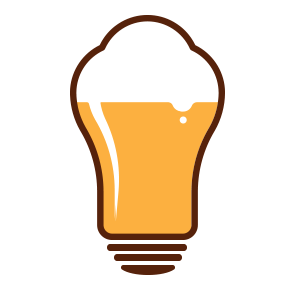Low alcohol and non-alcoholic beverages are growing more and more popular. Which is great news for consumers who want a healthier alternative to their favourite beverage. But if there is one thing I’m sure most people want to know it’s how the alcohol is actually removed from these drinks.
While some low-alcohol/ non-alcoholic beverages are made with completely new recipes that don’t have any (or very little) alcohol, this isn’t always the case. In fact, many low alcohol/ non-alcoholic beverages are made using the same process as their alcoholic counterparts.
At least up to a certain point anyway, the recipe/ process will be the same until the alcohol needs to be removed. There are numerous different processes that can be used to remove the alcohol. For our examples, we’ll be using non alcoholic beer, but these processes can be used with many other beverages. Let’s take a more in-depth look at the different processes.
Dealcoholisation
Dealcoholisation is a process that involves making beer in the traditional way like we mentioned earlier. Then the alcohol is removed, this can actually be done in a few different ways as well. Below, we’ve listed the ways dealcoholisation can be done.
Steam Distillation: Because alcohol has a lower boiling point than water it can actually be removed by heating the alcohol up. While this method is popular and will remove a lot of the alcohol it needs to be done very carefully as it can easily affect the flavour of the beverage.
Water Vapour: Also known as gas stripping this method heats the beer up but uses special equipment to pass water vapour or a gas like nitrogen through the beverage. The water vapour/ gas then carries the alcohol away as it passes through. Again, this is a very delicate process and requires fine balancing to ensure the flavour of the beer is kept intact.
Reverse Osmosis: With this method of dealcoholisation the beer is moved through a membrane with high-tech equipment. This membrane is designed to capture the larger beer flavour molecules. But the smaller molecules that contain the alcohol are passed through. This process works very well but requires very hi-tech equipment.
Limited Fermentation
Alcohol is produced during the fermentation process. This is when the yeast breaks down sugar into the wort. So, if you limit the fermentation process in some way then you can create a low alcohol/ non-alcoholic beer.
There are numerous ways to do this with one of the most common being to reduce the number of fermentable sugars in the wort. Using grains like rice or maize which naturally contain less sugar is a great way to achieve this.
There are also techniques that brewers can utilise that extract the sugars during the mashing process. Brewers can also use special yeast strains that have been designed to produce only very low amounts of alcohol as well.
Dilution
Dilution is one of the most popular ways to make alcohol-free beer and also one of the simplest. With dilution, beer is made in the same traditional way, and after it as fermented water is added to dilute it and lower the ABV percentage.
The beer is then re-carbonated to help restore its fizz and flavour. So, dilution works in the same manner as diluted soft drinks does in many ways. While it is simple and easy compared to some methods it still requires fine balancing. If you dilute the beer too much then the flavour will get lost.
Fermentation Free
While many low alcohol and non-alcoholic beers will be fermented they don’t have to be. In fact, using a fermentation free brewing method is one of the ways these beers can be made. By avoiding fermentation brewers can streamline the process because removing any alcohol will be much easier.
Fermentation free can be difficult though as it will often mean making big changes to recipes or the production process. However, this can be done and some of the most popular low alcohol and non-alcoholic beers/ beverages use recipes that completely ignore the fermentation process.
So, that is the lowdown on the many different ways alcohol can be removed from beverages. By altering things in a few different ways some amazing low alcohol/ non-alcoholic beverages can and have been made.

